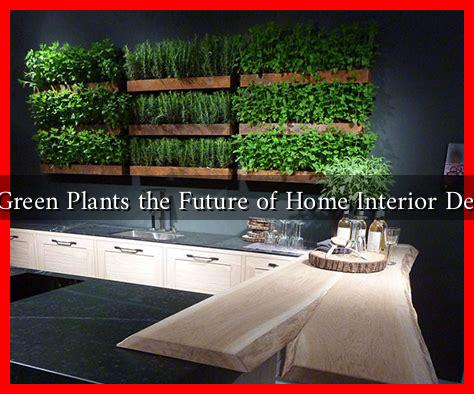-
Table of Contents
Are Green Plants the Future of Home Interior Design?
In recent years, the trend of incorporating green plants into home interior design has gained significant momentum. As urban living spaces become more compact and technology-driven, the need for a touch of nature in our homes has never been more pressing. This article explores the reasons why green plants are not just a passing trend but potentially the future of home interior design.
The Psychological Benefits of Greenery
Numerous studies have shown that the presence of plants in our living spaces can have profound psychological benefits. Here are some key findings:
- Stress Reduction: A study published in the Journal of Physiological Anthropology found that interacting with indoor plants can reduce stress levels and promote feelings of calmness.
- Improved Mood: Research from the University of Queensland revealed that employees in offices with plants reported a 15% increase in well-being.
- Enhanced Creativity: A study by the University of Exeter found that incorporating plants into workspaces can boost creativity by up to 45%.
These psychological benefits make a compelling case for integrating green plants into home design, as they can enhance the overall quality of life for residents.
Health Benefits of Indoor Plants
Beyond aesthetics and mood enhancement, indoor plants also contribute to better health. Here are some notable advantages:
- Air Quality Improvement: According to NASA’s Clean Air Study, certain houseplants can remove toxins such as formaldehyde, benzene, and trichloroethylene from the air.
- Humidity Regulation: Plants release moisture vapor during transpiration, which can help maintain indoor humidity levels, reducing respiratory issues.
- Enhanced Focus: A study from the University of Michigan found that being around plants can improve concentration and memory retention by up to 20%.
These health benefits further solidify the argument for incorporating greenery into home interiors, making them not just visually appealing but also essential for well-being.
Design Versatility and Aesthetic Appeal
Green plants offer unparalleled versatility in design. They can complement various interior styles, from minimalist to bohemian. Here are some popular ways to incorporate plants into home design:
- Statement Pieces: Large potted plants like fiddle leaf figs or monstera can serve as focal points in a room.
- Vertical Gardens: Living walls or vertical gardens are perfect for small spaces, adding greenery without taking up floor space.
- Hanging Planters: Macramé hangers or modern wall-mounted planters can add a unique touch to any room.
With the rise of social media platforms like Instagram and Pinterest, showcasing plant-filled interiors has become a popular trend, inspiring homeowners to embrace greenery in their spaces.
Case Studies: Successful Integration of Plants in Interior Design
Several companies and designers have successfully integrated plants into their designs, showcasing the potential of greenery in home interiors:
- Green Spaces in Offices: Companies like Google and Amazon have incorporated biophilic design principles, using plants to create healthier work environments.
- Residential Projects: Designers like Kelly Wearstler and Studio McGee have embraced plants in their projects, demonstrating how they can enhance aesthetics and functionality.
These examples illustrate that the integration of plants is not only feasible but also beneficial in various settings.
Conclusion: A Greener Future for Home Interiors
As we move towards a more urbanized and technology-driven world, the need for natural elements in our living spaces becomes increasingly important. Green plants offer numerous psychological and health benefits, enhance aesthetic appeal, and provide versatile design options. With successful case studies and a growing body of research supporting their integration, it is clear that green plants are not just a trend but a vital component of the future of home interior design.
Incorporating greenery into our homes can lead to improved well-being, creativity, and overall quality of life. As we look ahead, embracing the beauty and benefits of green plants may very well be the key to creating healthier, happier living environments.
For more insights on the benefits of indoor plants, you can visit NCBI.

